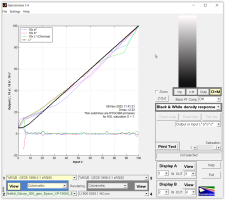- Joined
- May 29, 2007
- Messages
- 2,729
- Reaction score
- 1,532
- Points
- 313
- Location
- Ghent, Belgium
- Printer Model
- SC-900 ET-8550 WF-7840 TS705
I discovered that ArgyllCMS created printer profiles tend to use composite black when BPC is checked. This is most visible on pigment printers like the Epson SC-P800. When BPC is unchecked the black area is much more darker and intenser when BPC is disabled, thus improving contrast of the picture printed significantly. Using Colormunki software BPC does not affect the blackness at all and 100% is always printed with the dedicated photo/matte black unlike ArgyllCMS created printer profiles. Anyone knows how to change this during the profile creating process ?


